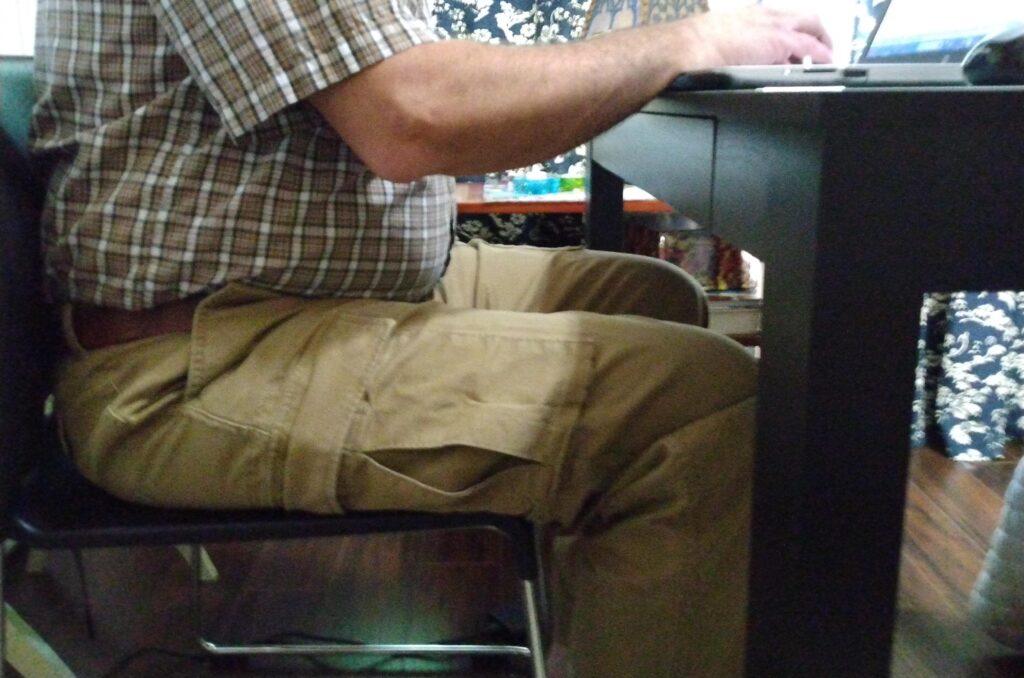Could you ‘pants’ your way through a novel? I couldn’t.
Definition
‘Pantsing’ means writing without an outline—writing by the seat of your pants. That idiom, by the way, builds on the idea of mariners ‘sailing by the stars.’ In the early days of aviation, pilots who flew without instruments or navigational aids were said to be ‘flying by the seat of their pants.’
I’ve blogged about pantsing before, mainly here and here, but those posts contrasted plotters and pantsers. Today I’d like to concentrate on pantsers alone.
To me, pantsing seems strange, alien, almost unimaginable. Being curious by nature, I’d like to try it sometime. I’ve read blogposts by a few pantsers, and it seems like something I might just be able to do. In a short story, maybe, not a novel.
How to
How does pantsing work? According to the Writing Mastery Academy, you start with an idea, get to know your characters, remain open to inspiration, track your story with a simple organizational system, and keep your end goal in mind. The organizational system they recommend is not an outline written in advance (that wouldn’t be pantsing). It’s a very simple outline or set of notes compiled while writing, more like a rearview mirror view to organize what you’ve written.
Ariele Sieling’s process seems similar, but emphasizes different things. She says you should sit down, find your glimmer, say what comes to mind, and don’t stop. The ‘glimmer’ is the starting point, the ‘glimmer of an idea.’ I’d say the ‘don’t stop’ part goes along with ‘keeping your end goal in mind’ from the previous paragraph.
The Secret
But, without an outline, how do you keep your novel from going all over the place, on crazy tangents, or having minor characters start hogging the limelight, or changing your protagonist’s eye color several times? Lauren Sapala’s answer is to trust yourself and your process. It will work out alright. You can fix all those problems in later editing.
Not my Type
In another post, Lauren Sapala explains you don’t have much choice anyway. You can’t choose whether to write like a plotter or pantser—your personality dictates the choice. Using Myers-Briggs Type Indicator terminology, she says INFJ or INFP personalities seem most suited to pantsing. Those stand for Introverted-Intuitive-Feeling-Judging and Introverted-Intuitive-Feeling-Perceiving. Experts often describe these two personality types as the Advocate and the Mediator.
Since I’m an INTJ (Architect), that might explain why I don’t lean toward pantsing.
Point on a Line
Still, there’s hope for me yet. According to Kristina Adams, plotting and pantsing don’t result from a binary choice. They lie on a spectrum, depending on how much you rely on a previously written outline, how detailed that outline is, and how firm you are about sticking to it. You may write at any point along that spectrum.
What Pantsing Isn’t
As you read this post, some of you, no doubt, wondered if the opposite of pantsing is to write without wearing pants. That sounds easier than pantsing (as I’ve described it) and perhaps it’s worth some experimentation by—
Poseidon’s Scribe

